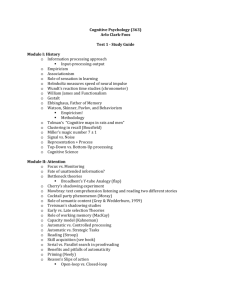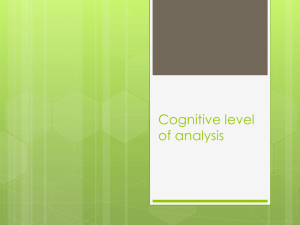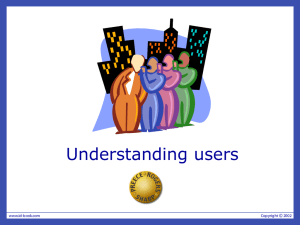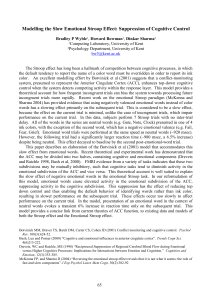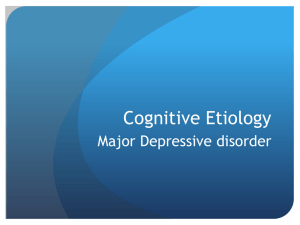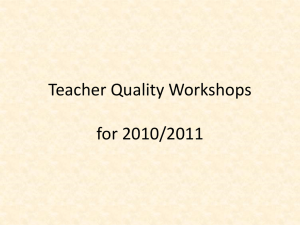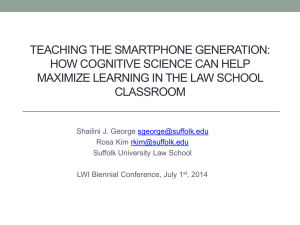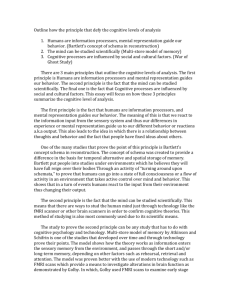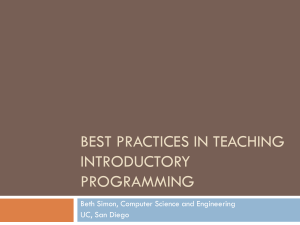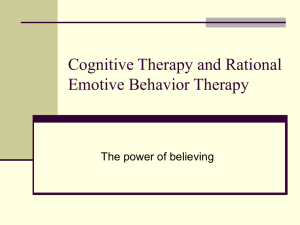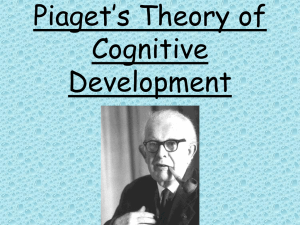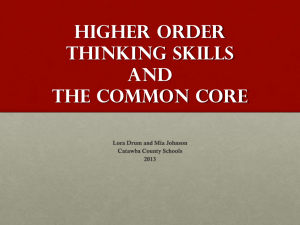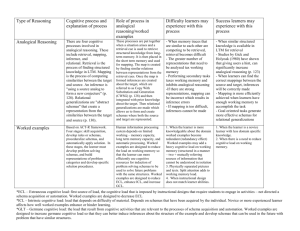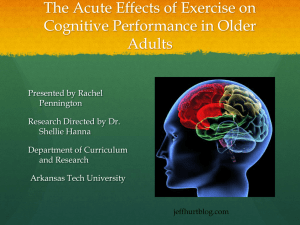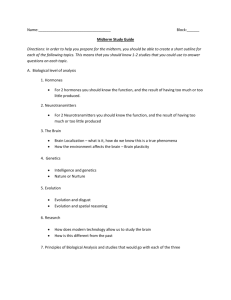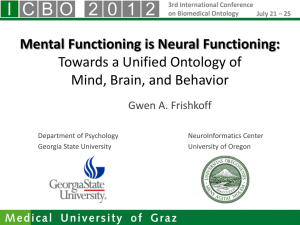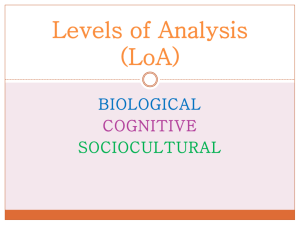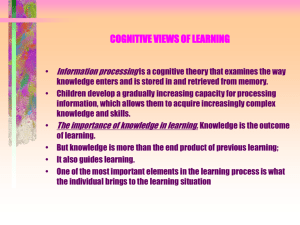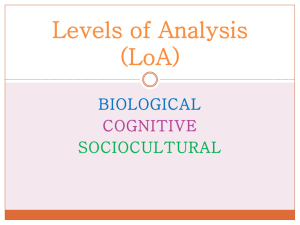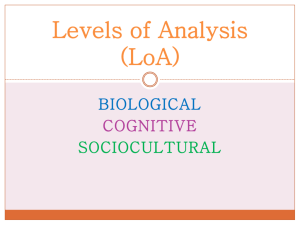File
advertisement
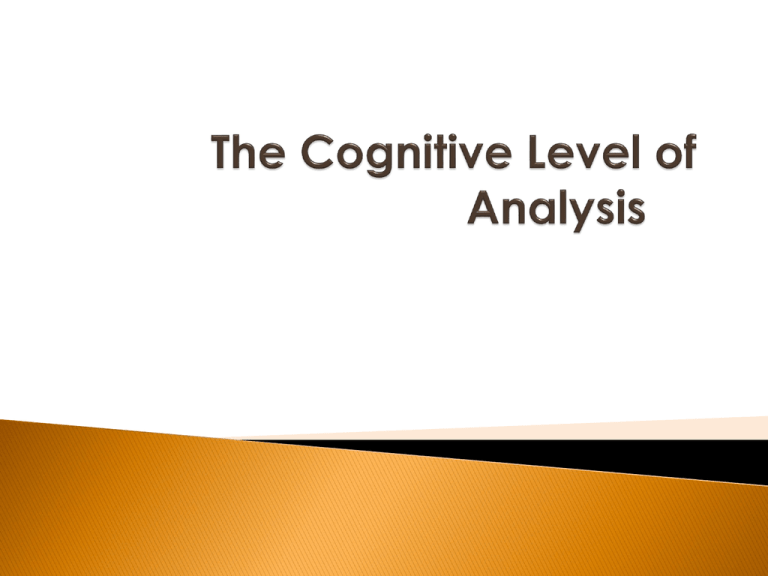
How would you rate your memory? Does this number vary from day to day? Morning to evening? The human mind is quite sophisticated. It can manipulate abstract symbols like words and images. These mental representations can refer to objects, ideas, and people in the real world; people use them when they think, make plans, imagine, or daydream. You have an idea of how you look somewhere in your mind – a self-representation. You also have ideas about how other people are. Mental representations are organized in categories, and the mind contains all sorts of mental representations stored in memory. Cognitive schemas – pre-stored mental representations. Mental representations – how we store images and ideas in memory. Researchers believe that what we already know (cognitive schemas) affects the way we interpret events and store knowledge in out memory. Study of mental processes Study of the way in which the brain processes information It concerns the way we take in information from the outside world, how we make sense of that information and what use we make of it. Definition: "the process of thinking"; "the cognitive operation of remembering" (Stanford, 2010) Ex. Functions or processes such as perception, introspection, memory, creativity, imagination, conception, belief, reasoning, volition, and emotion—in other words, all the different things that we can do with our minds. \ Mental representations and processes guide behavior Models of mental processes can be proposed and investigated scientifically Cognitive processes are influenced by social and cultural factors Human behavior is determined by a set of mental tasks/processes Mental tasks/processes include; perception, thinking, problem solving, memory, language and attention -They are also known as cognitions Cognitive psychologist see these cognitions/mental tasks as active systems; In between taking in and responding to information a number of processes are at work. Information can be transformed, reduced, elaborated, filtered, manipulated, selected, organized, stored and retrieved Therefore the human mind is seen as an active system processing information, and cognitive psychologists aims to study these processes. ◦ People, like computers, acquire information from the environment ( input ). ◦ Both people and computers store information and retrieve it when applicable to current tasks; ◦ Both are limited in the amount of information they can process at a given time; ◦ Both transform information to produce new information; both return information to the environment ( output). ◦ This information processing approach can demonstrated in research with; ◦ Models of memory ◦ Schema theory (This can be used to assist you with objective 1.2). ◦ Cognitive processes are difficult to study. They often occur rapidly, and inside the mind so they cannot be observed directly. ◦ It is only the responses that participants make when given some cognitive task to perform that can tell us about cognitive processes. ◦ These tasks usually take place under tightly controlled lab experiments where the main aim is to isolate a particular component of the cognitive process for the study. (This can be used to assist you with objective 1.2) Example: The stroop effect ◦ One of the earliest and most famous experiments into cognitive processes is the Stroop Effect. ◦ The stroop effect is a phenomena involved in attentional processes. It demonstrates the effects of interference, processing speed (reaction time) and automaticity in divided attention. The effect is named after John Ridley Stroop who first published the effect in English in 1935. This is a classic laboratory experiment that involves the manipulation of an independent variable (color or name of word ) to see what effect it has on the dependent variable ( reaction time). It attempts to control the influence of all other extraneous variables – such as other cognitive processes or skills. It also allows us to establish a cause and effect relationship between task and mental process. A further example of the laboratory experiment was conducted by Ebbinghaus (1885). His experiment intended to isolate the process of pure memory and show that it could be studied scientifically under carefully controlled conditions. The aim of the study was to assess short term memory, i.e. how quickly a person forgets what has been learned 100%. He used himself in most of the studies , i.e. the design was N=1 and he tested his memory using nonsense syllables. Learned lists of nonsense syllables (e.g., DAX, QEH) Why nonsense syllables? He did not want actual words to influence his ability to memorize or recall certain words He manipulated the independent variable of ‘time delay before recall’ to find the effect on the dependent variable of ‘the amount of information retained’ thus being able eventually to draw the famous ‘forgetting curve’. In other words Language, perception, schemas, etc. can be influenced by our culture. How so? This principle may b e demonstrated in research that looks at social and cultural influences on cognitive processes. Such as schemas Examples: a. Frederic Bartlett, coined the term schema, which is a mental representation of knowledge. Schema is defined as a mental representation of knowledge, it’s an internal depiction of the world. He was predominantly fascinated how cultural schemas influence one’s recollection. A+ info on Barlett’s study http://myclass.peelschools.org/sec/11/20135/Lessons/Period%204/Cogniti ve%20Level%20of%20Analysis/Bartlett,%20Schema%20Theory,%20Reco nstructive%20Memory,%20Serial%20Reproduction,%20Native%20Americ an%20Legend,%20War%20of%20the%20Ghosts.pdf In your response, you must Show an objective way that the principle can be studied Provide a research example of a study that demonstrates the principle Show how the specific study demonstrates the principle.

